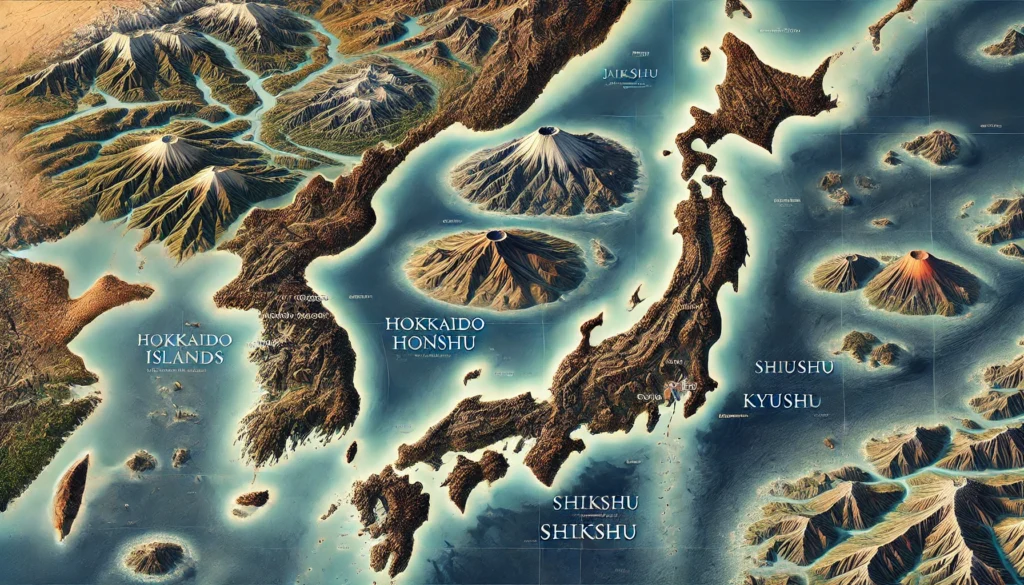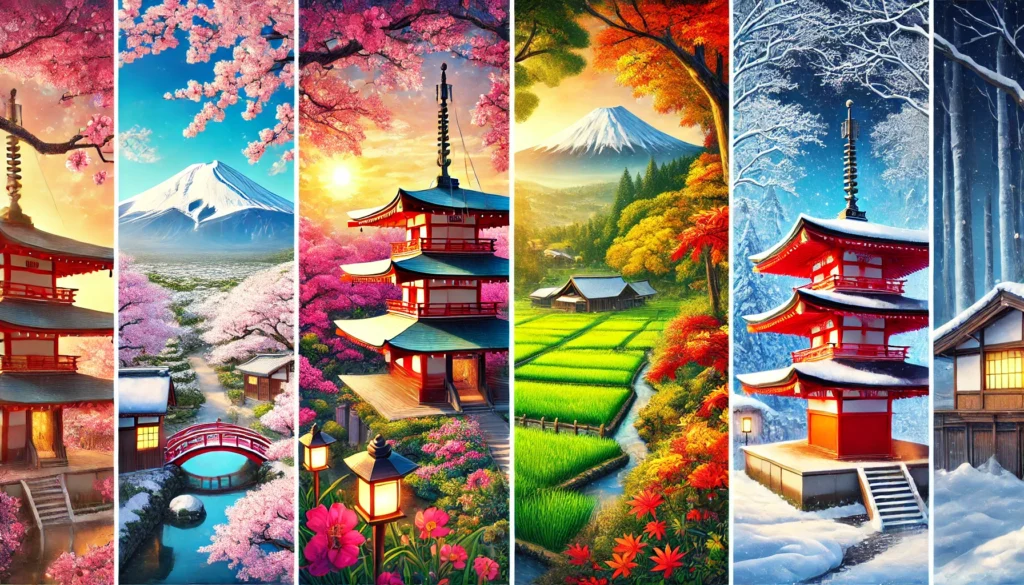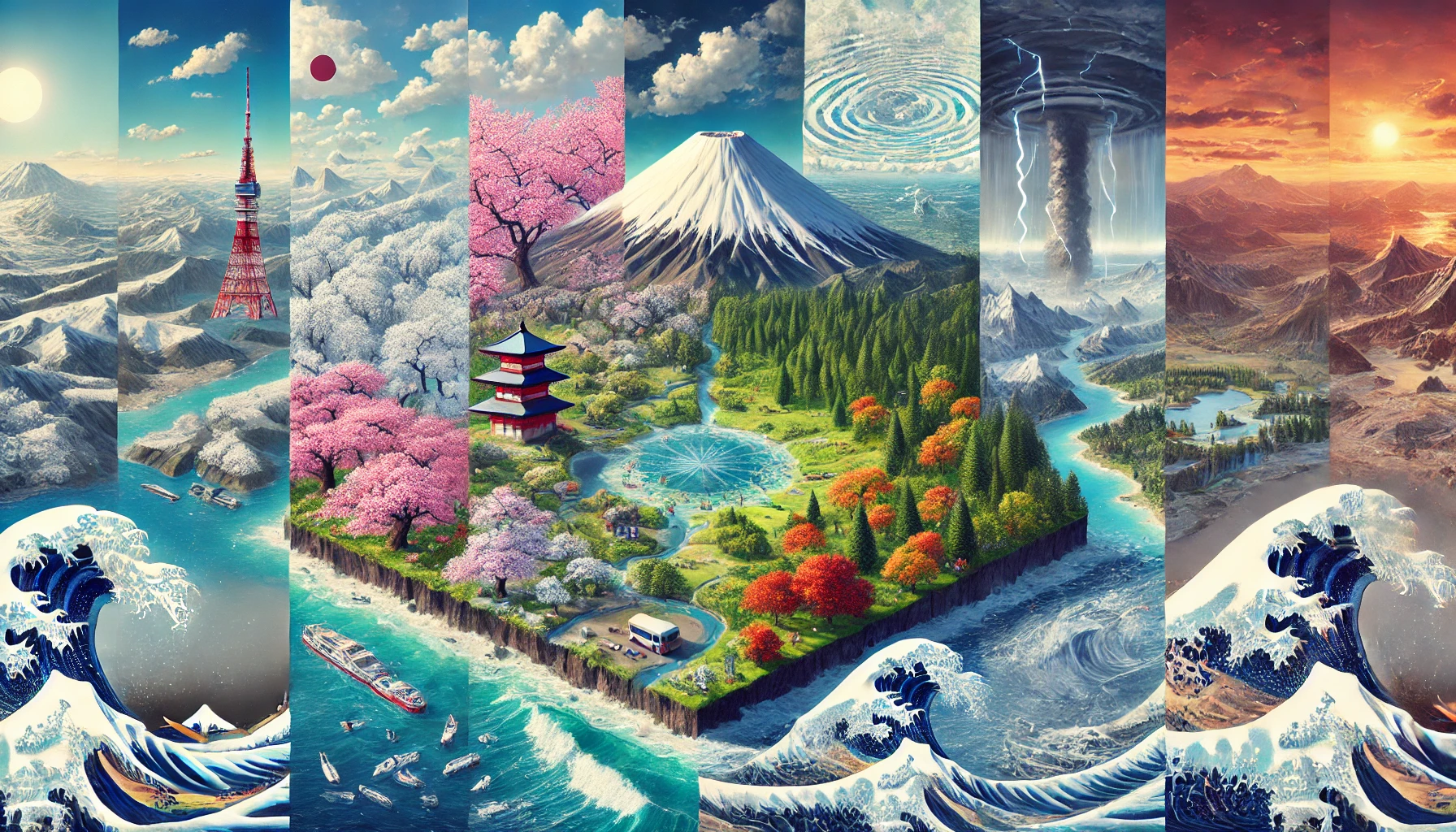Japan is one of the most geographically unique countries in the world. Its distinctive terrain and climate have greatly influenced Japanese culture and lifestyle. In this article, we will provide an overview of Japan’s geographical features.
1. The Formation and Terrain of the Japanese Archipelago

● An Island Nation
Japan is located off the eastern coast of Asia and consists of approximately 6,800 islands. The four main islands—Hokkaido, Honshu, Shikoku, and Kyushu—make up most of its land area. Being surrounded by the sea has shaped Japan’s maritime culture, making fishing a significant part of its economy.
● A Land Dominated by Mountains
About 70% of Japan’s land is mountainous, leaving little space for habitable areas. As a result, urban areas tend to be densely populated, leading to the development of megacities like Tokyo and Osaka. The abundance of mountains also creates stunning landscapes, including terraced rice fields, waterfalls, and numerous hot springs.
2. Japan’s Climate and Four Distinct Seasons

● Clearly Defined Seasons
Japan’s temperate location gives it four distinct seasons, each deeply connected to nature and culture. Seasonal events like cherry blossom viewing in spring, fireworks in summer, autumn foliage sightseeing, and snow festivals in winter are key parts of Japanese life.
• Spring (March–May): Cherry blossoms bloom across the country.
• Summer (June–August): Hot and humid with a rainy season (Tsuyu).
• Autumn (September–November): Beautiful autumn foliage.
• Winter (December–February): Heavy snowfall in certain regions.
● Regional Climate Differences
Japan stretches over 3,000 km from north to south, resulting in diverse climates:
• Hokkaido: Cold and snowy winters.
• Okinawa: A subtropical climate with warm temperatures year-round.
• Japan Sea Coast: Heavy snowfall in winter.
• Pacific Coast: Generally milder and drier in winter.
3. Japan: A Country of Earthquakes and Volcanoes

● A Land of Frequent Earthquakes
Japan sits on the Pacific Ring of Fire, a tectonic region where earthquakes are common. Major quakes, such as the Great East Japan Earthquake (2011) and the Great Hanshin Earthquake (1995), have shaped Japan’s disaster preparedness. The country has advanced earthquake-resistant architecture and early warning systems.
● Numerous Volcanoes and Hot Springs
Japan has over 110 active volcanoes, accounting for about 7% of the world’s total. Volcanic activity has resulted in abundant hot springs (onsen), which are popular for relaxation. Famous hot spring areas include Kusatsu, Beppu, and Hakone.
5. Japan’s Natural Resources and Culture

● Abundant Water Resources
Japan receives significant rainfall, providing ample fresh water. This has supported rice cultivation, a key aspect of Japanese agriculture. Additionally, Japan’s high-quality water is essential for making sake, soba noodles, and tofu.
● Seafood-Rich Diet
Being surrounded by the sea, Japan has developed a seafood-based diet. Sushi, sashimi, and other raw seafood dishes are uniquely Japanese and highly valued worldwide.
Conclusion
Japan is a land of natural beauty, shaped by its geographical features. While the country faces frequent natural disasters such as earthquakes and typhoons, it is also blessed with abundant natural resources, stunning seasonal landscapes, and a rich cultural heritage. Understanding these geographical aspects provides deeper insight into Japan’s way of life and traditions.
Recommended Articles







Comments